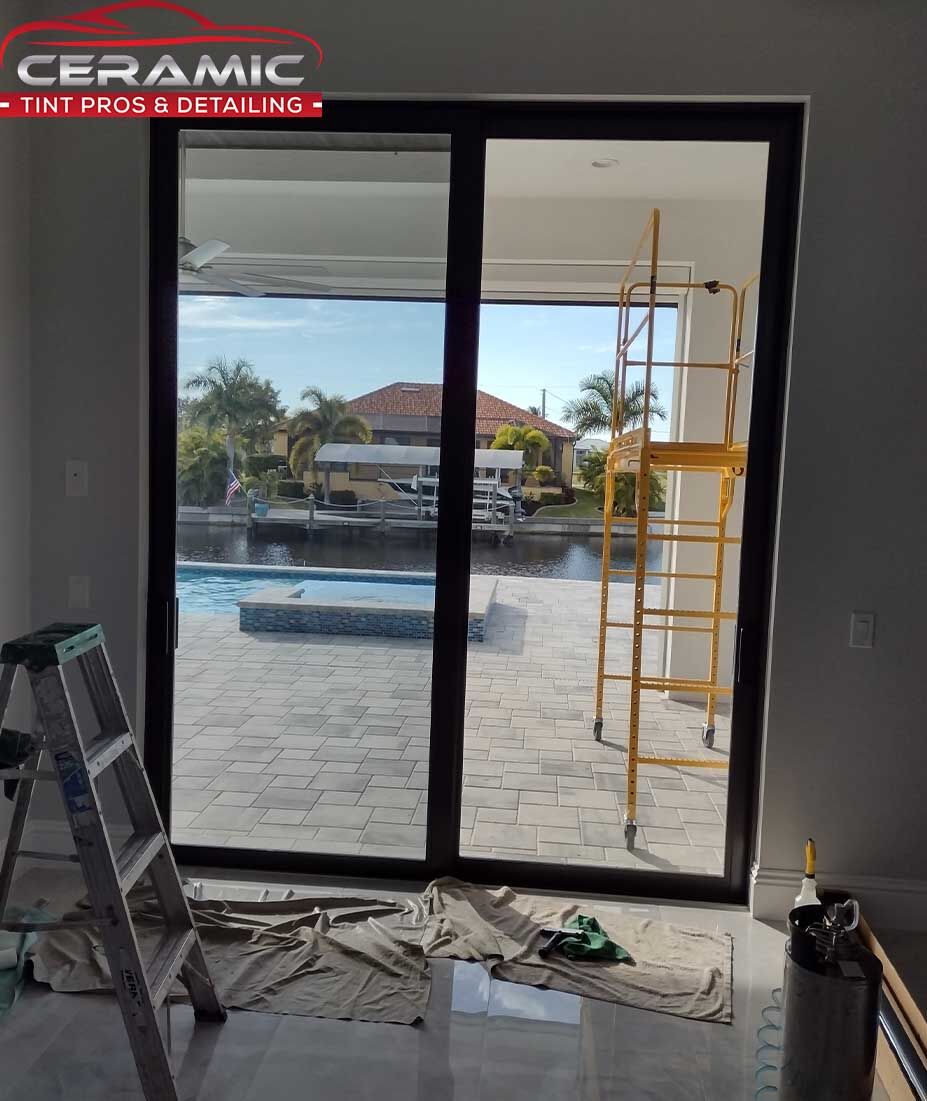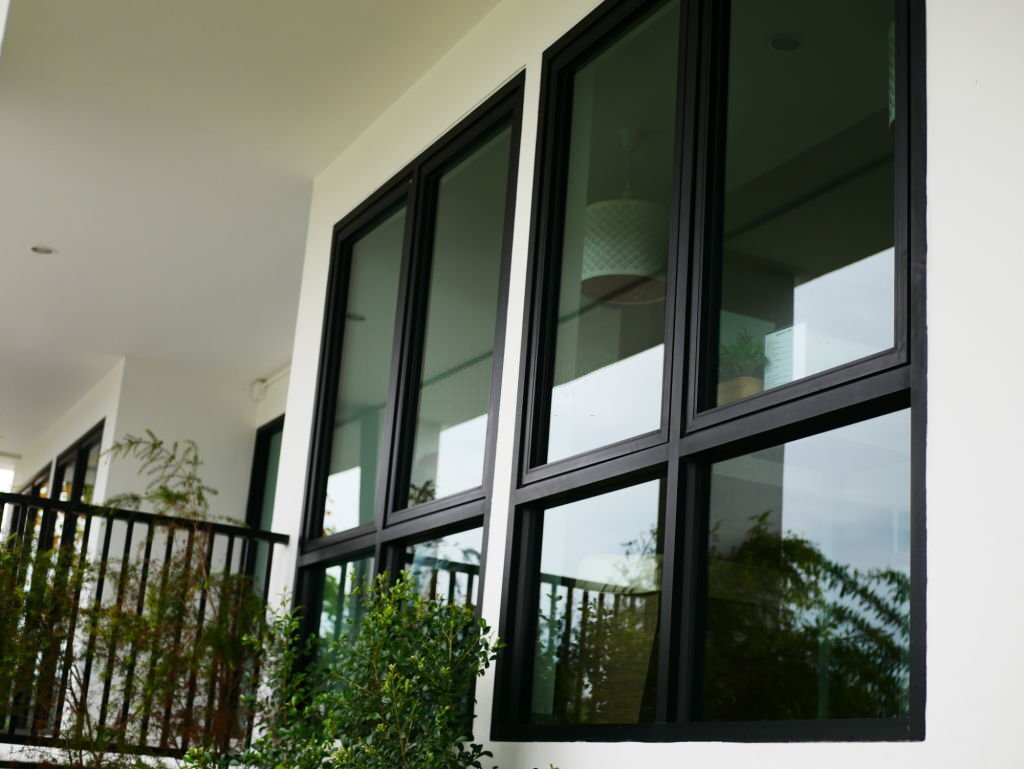Residential Window Tint for Huge Windows: Keep Convenience and Style
Residential Window Tint for Huge Windows: Keep Convenience and Style
Blog Article
Just How Residential Window Tinting Improves Your Home's Energy Efficiency
Residential window tinting offers an engaging remedy for house owners seeking to boost energy performance within their living areas. By using specialized movies to home windows, it efficiently reduces warmth transfer, consequently supporting interior temperatures and decreasing the demand for extreme heating or air conditioning.
Comprehending Window Tinting
Understanding window tinting is necessary for home owners seeking to enhance both convenience and energy efficiency in their space. Residential Window Tint. Window tinting includes the application of a slim film to the interior or outside surface of glass windows. This film can dramatically regulate the amount of sunshine and warm that enters a home, thus affecting indoor climate conditions
There are different kinds of window tinting movies offered, each with unique residential properties. As an example, colored films take in solar power, while reflective films deflect it away from the glass surface. Ceramic films offer an equilibrium of visibility and warmth being rejected, making them a prominent selection amongst house owners. The performance of home window tinting is usually measured by its Visible Light Transmission (VLT) portion, which indicates just how much light can travel through the movie.
Advantages of Power Effectiveness
Window tinting not only boosts visual appeals yet also plays a substantial function in improving energy efficiency within property rooms. By lowering warmth transfer through home windows, tinted films produce a more secure indoor environment, which can bring about significant decreases in power intake for home heating and air conditioning. This power performance translates into reduced energy expenses, supplying homeowners with considerable long-lasting savings.

In addition, window tinting boosts the comfort of living spaces. By lessening glow and blocking damaging UV rays, tinted windows produce an even more pleasurable setting, which can bring about boosted health for owners. The security against UV rays additionally helps preserve furnishings and flooring from fading, adding to the longevity of family items.
How Tinting Works
Tinting movies run with a combination of sophisticated products and innovations created to regulate the amount of solar energy going into a home. Primarily made up of polyester, these films often integrate metallic or ceramic bits that show and take in warm. This twin capacity permits them to significantly lower the infiltration of ultraviolet (UV) rays and infrared radiation while allowing noticeable light to travel through.
The efficiency of window tinting is gauged by its solar warm gain coefficient (SHGC), which shows exactly how much solar power is transmitted with the home window. Reduced SHGC worths are better as they denote better warm denial. Additionally, home window tints can feature a variety of shades, allowing homeowners to customize their aesthetic choices while boosting power efficiency.
Additionally, these movies work as an obstacle, protecting against warm loss throughout chillier months by reflecting indoor heat back right into the space. This thermal insulation impact complements the cooling advantages obtained throughout warmer months, adding to a balanced interior climate year-round. By taking care of solar energy effectively, property home window tinting not only improves convenience but also plays a vital duty in decreasing energy usage and reducing energy bills.
Picking the Right Tint

There are numerous kinds of home window films readily available, consisting of dyed, metalized, and ceramic. Dyed films are cost-effective yet might have restricted sturdiness. Metalized films use much better heat rejection yet can hinder electronic browse around this web-site signals. Ceramic films supply outstanding warmth control without compromising exposure and are highly long lasting, making them a popular selection.
Noticeable light transmission (VLT) is another vital aspect, as it suggests the quantity of all-natural light that can travel through the tinted glass. House owners must choose a color with a VLT that complements their lighting preferences while still offering appropriate he has a good point glow decrease.
In addition, examining the solar warm gain coefficient (SHGC) can help identify just how well a color can obstruct heat from sunshine. A reduced SHGC suggests far better warmth control, eventually enhancing power efficiency.
Installment and Upkeep Tips
Appropriate setup and maintenance are essential parts in optimizing the benefits of domestic window tinting. Professionals additionally make use of specialized devices and strategies, which can enhance the longevity and effectiveness of the color.
Adhering to installment, upkeep is important to extend the life of the window film. It is suggested to wait at least one month before cleaning the colored home windows to permit the glue to heal completely. When cleansing, utilize a soft fabric and a gentle, ammonia-free cleaner to avoid damaging the film. Avoid abrasive materials that can damage the surface area.
Resolving these concerns without delay can prevent further damages and keep energy efficiency. By sticking to these setup and upkeep suggestions, homeowners can guarantee their home window tinting continues to offer substantial power financial savings and convenience for years to come.
Conclusion
To conclude, property window tinting offers as an effective option for enhancing energy effectiveness within homes. By lowering warm transfer and blocking damaging UV rays, home window films add official website to reduce power usage and improved indoor convenience. The selection of appropriate tinting materials, together with correct installation and maintenance, further makes best use of these benefits. Ultimately, window tinting stands for a sustainable investment that not just reduces energy costs however also advertises a comfy living setting throughout the year.
Window tinting involves the application of a thin movie to the interior or outside surface area of glass windows. By lowering warmth transfer with windows, colored films create an extra secure interior climate, which can lead to considerable decreases in power usage for heating and air conditioning.The performance of home window tinting is determined by its solar warmth gain coefficient (SHGC), which indicates exactly how much solar power is transmitted through the window. By handling solar power effectively, household window tinting not just improves convenience yet additionally plays a crucial duty in decreasing energy consumption and reducing energy costs.
By lowering heat transfer and obstructing unsafe UV rays, home window films contribute to reduce energy usage and enhanced interior convenience.
Report this page